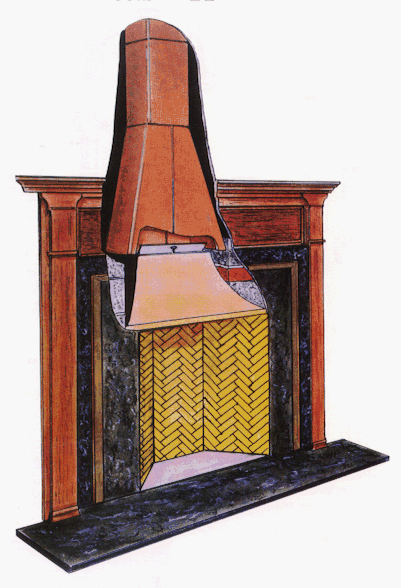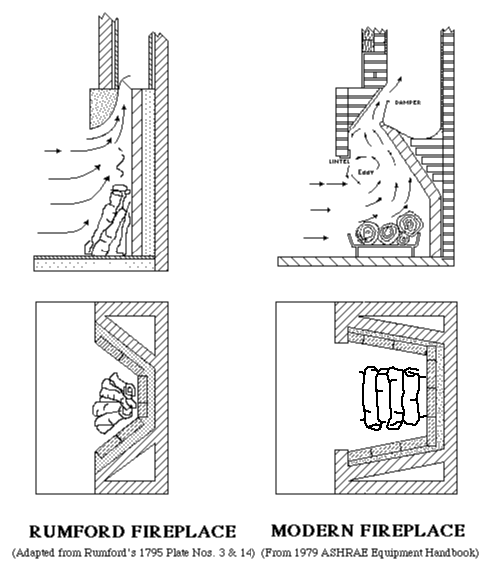Rumford Fireplace Performance
1/2/19
|
Emissions: Rumford fireplaces are among the cleanest-burning wood-burning appliances. They have been tested by an EPA certified laboratory and found to meet EPA standards for certified Phase II woodstoves by an equivalency appropriate for fireplaces. Rumford fireplaces are approved in the State of Washington and many areas in California, Arizona and Colorado that regulate fireplace emissions. For more information about emissions, see the "emissions" page. Heating efficiency: Rumford fireplaces are the best wood-burning high intensity radiant heaters ever developed. They heat people and surfaces like sunshine and like the infrared heaters you see at outdoor restaurants, or in aircraft hangers or UPS garages where it's difficult and inefficient to try to heat air. Rumfords work best in open areas, big rooms with vaulted ceilings or even outdoors. Radiant heat raises the mean radiant temperature of surfaces and makes people feel comfortable at cooler air temperatures, just like the sun, so Rumford fireplaces are a good way to heat even with the windows open in moderate climates like those of England, the west coast or the midwest in the spring and fall. More about radiant heat and efficiency in a tech note. |
 Draft: Apples to apples, Rumford fireplaces draw better than any other fireplace. The streamlined throat and efficient air flow makes it possible to build the Rumford fireplace opening about a foot taller than other fireplaces. And we do build them tall (usually as tall as they are wide) because we can and because tall fireplaces heat better and look better. Then they don't draw any better than regular low fireplaces. The point, of course, is to heat - not draw better than they need to and waste heated room air. There's a lot more about how fireplaces draw in the JLC article about Rumfords and how they work in very tight houses and what to do to fix "smoky" fireplaces in the "technical Discussion".
|

|
As the arrows indicate, the sloping fireback of the modern fireplace on the right kicks the smoke forward where it mixes turbulently with the dilution air flowing into the face of the fireplace. Masons will tell you that you must "cross over" (build the top of the opening) 8" or 10" below the damper to create an area where the smoke and dilution air mix before going through a large "gate valve" damper into the flue. If the fireplace opening is too high, or the damper too low, the fireplace will smoke. The Rumford fireplace works on a different principle. The idea of the plumb fireback and rounded streamlined throat is to let the dilution air flow as a sheet of clean air that keeps the smoke and products of combustion behind it flowing up the fireback. Turbulence is undesirable until the dilution air and smoke enter the smoke chamber flowing smoothly through the narrow nozzle-like throat. "So what?" you might ask. Well, for starters the Rumford fireplace can be built taller and is more efficient and cleaner-burning. The Rumford fireplace can be built much taller than a standard fireplace because of the efficiency of the airfoil throat and control of the smoke flowing up the fireback behind the sheet of clean air. By not mixing the smoke and dilution air more smoke burns in the firebox where it contributes to useful heat rather than exiting the chimney as particulate emissions. The Rumford design increases the "residency time" - the length of time the smoke is hot and in the fire - by about four times compared with the modern fireplace where the smoke is diluted and fire is quenched about 6" over the fuel. For more on the physics with some test data to back up these claims, read the JLC article about Rumfords.
|

[Back to Technical Discussion]
Buckley Rumford Fireplaces
Copyright 1995 - 2019 Jim Buckley
All rights reserved.
webmaster